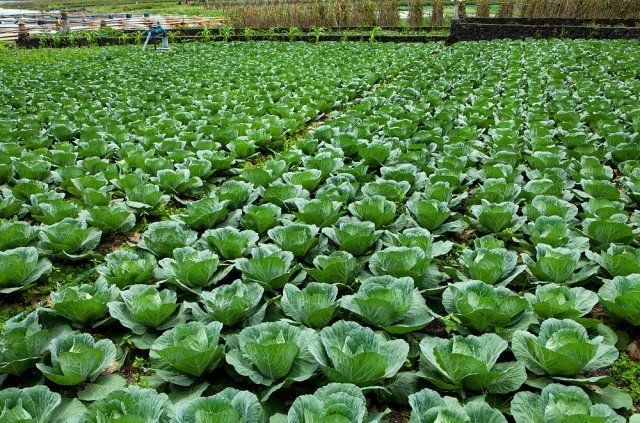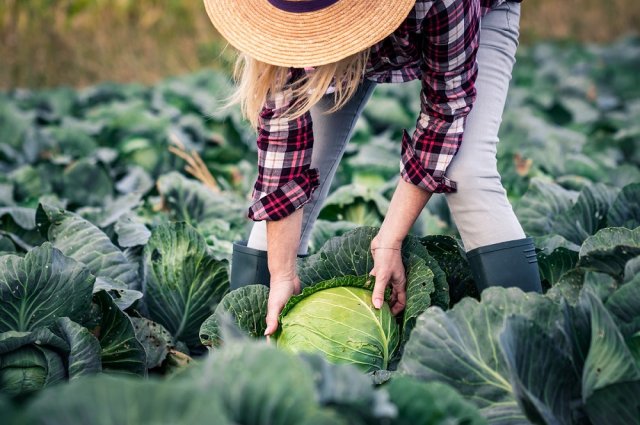All varieties of cabbage are useful in their own way and can diversify the winter menu, adding vitamins to it. But how to store cabbage at home so that it lasts until spring and does not spoil?
The shelf life of cabbage depends on many factors. First of all, of course, it is the variety. Agricultural technology, soil, harvesting time, and the chosen storage method are also important. Not all gardeners follow the basic rules that allow you to enjoy fresh cabbage for 8-10 months after harvesting.
The best varieties of cabbage for storage
Preparation for storing cabbage begins at the stage of selecting seeds. Not all cabbage is suitable for “wintering” in fresh form – heads of early and mid-season varieties will not last even until December. They are good to treat yourself to in the summer or early autumn, but for pickling and winter storage, cabbage of mid-late and late varieties is suitable, as well as that which has a mark “for storage” on the seed packaging.
Mid-late varieties of cabbage intended for storage: Belorusskaya 455, Dobrovolskaya, Vyuga, Podarok, Rusinovkaa. Of the late-ripening varieties, the most popular are: Amager 611, Snow White, Stone Head, Wheatear, MorozkoTheir dense heads are resistant to rot, easily stored for 8-10 months and only become tastier with time.
How to Grow Cabbage for Storage
Storing fresh cabbage in winter is only possible if it has been grown correctly. After all, the composition of the soil, the fertilizers added to the soil, and even autumn rains can change the keeping quality of the heads of cabbage for the worse.
However, although there are many subtleties to growing cabbage, the following can be considered the most important:
- cabbage grown on light or loamy soils has a longer shelf life;
- a large amount of nitrogen fertilizers reduces the shelf life of cabbage, while potassium-phosphorus fertilizers, on the contrary, increase it;
- an abundance of autumn precipitation or excessive uneven watering leads to cracking of the heads of cabbage, and they will not be stored;
- Harvesting the crop too early will not allow the vegetables to ripen; if they are unripe, they will not last even a couple of months.
Preparing cabbage for storage
In order for cabbage to be stored for a long time, you need to put in some effort during the harvesting process.
- Carefully sort the cabbage: only ripe, dense heads of cabbage without cracks, mechanical damage, mold, rot or signs of disease will survive the winter fresh.
- When cutting, be sure to leave a small part of the stalk (up to 3 cm) and a couple of strong covering leaves.
- Harvest in dry weather, and dry the cut cabbage in a warm, well-ventilated place for 24 hours.
- Don’t rush to harvest: wait until the daytime temperature drops to 3-8°C and the nighttime temperature drops to almost 0°C, and only then take the sharpest knife and go to the garden for cabbage.
How to Preserve Different Types of Cabbage
If Soviet summer residents mainly grew white cabbage, now you can find cauliflower, broccoli, kohlrabi, and Chinese cabbage in the beds. Not all of them are as easy to store as the white-green “koloboks” we are used to from childhood, but their life can be extended.
How to Store White Cabbage
White cabbage is one of the easiest vegetables to store. It easily tolerates temperature and humidity changes, does not require a separate room, and can be stored for a long time even in a room or on a balcony.
If you follow the basic storage conditions for cabbage (temperature from -1 to 2°C, and humidity – 85-95%), it will easily last more than six months. It is also important not to forget to regularly (at least once a month) air the room with the heads of cabbage and sort them out in search of rotten ones.
How to Store Cauliflower and Broccoli
Cauliflower and broccoli heads are not very durable – they can be stored for a few months at most. If you want to enjoy dishes from these vegetables all winter, it will be easier to disassemble them into florets and freeze them. Fresh cabbage can be laid out in wooden boxes covered with film and stored in the cellar. At the same time, it should be checked every couple of weeks and removed from storage at the first signs of rot.
Cauliflower can also be stored in the refrigerator, but to extend its shelf life, each head should be placed in a separate bag or wrapped in cling film.
How to Store Chinese Cabbage
Correctly selected humidity and storage temperature of cabbage will allow to extend the life of even the capricious Peking beauty. It can lie for up to 3 months if you provide it with humidity of about 95-98% and temperature from 0 to 2°C. However, even minor fluctuations in any of these parameters will lead to rotting or wilting of delicate leaves.
Where to store cabbage
Don’t know how to store cabbage correctly? Experienced gardeners have already come up with dozens of methods, each of which has its own pros and cons.
How to store cabbage in the cellar
If you have a spacious cellar in your private house or summer cottage, you have probably already decided how to store cabbage. The temperature and humidity in cellars are just right for cabbage heads, and they can be stored in several ways:
- hanging them by the stalks directly from the ceiling or beams;
- laid out in wooden boxes on the floor;
- on shelves 25-30 cm wide along the walls;
- in boxes with a thin (up to 10 cm) layer of sand, sticking a stalk into it.
It is important to remember that for longer storage, the heads of cabbage should not be placed close to each other, but at a distance of about 10 cm. Storing cabbage in film or paper also prolongs its life. Each head of cabbage is wrapped in paper or film or put into a separate bag. You will need to periodically check the packaging for condensation and, if any is found, replace it with a new one.
How to Store Cabbage in the Refrigerator
The shelf life of cabbage in the refrigerator is shorter than in the cellar, and its specific smell can bother you. However, a head of cabbage brought from the dacha can lie in a vegetable tray for a couple of months without harm to itself and others, and by wrapping it in paper or cling film, you will extend this period for another 3-4 weeks.
How to preserve cabbage on the balcony
A glazed but unheated balcony can also be a great place to store cabbage in winter. However, if it freezes in severe frosts, some of the heads of cabbage may die, but additional shelter from a couple of old coats or a carpet can fix the situation.
The easiest way to store cabbage on the balcony is in wooden boxes, separating the heads of cabbage from each other with plywood or cardboard partitions. If your balcony is not glazed, then the boxes need to be insulated with foam plastic at least 5 cm thick.
Storing cabbage in sand
For those who do not have a cellar, but only a shallow warm basement, the method with sand will do. A layer of sand is poured onto the bottom of the box, the heads of cabbage are placed and covered entirely, a second tier of cabbage is placed on top and also covered.
For such storage, it is better to choose clean river sand, and before use, if possible, it should be steamed or calcined.
Storing cabbage in a trench
Storing cabbage in trenches is rarely used, as it is one of the most inconvenient methods, and is only suitable for those who have no alternative.
Vegetable trenches slightly more than half a meter deep are dug on a hill, covered with straw, and the heads of cabbage are also covered with it from above. Wooden boards are laid on the straw, a 20 cm thick layer of soil is poured and a “beacon” is installed, allowing easy orientation in winter.
The disadvantages of this method are that water gets into the trenches and rodents easily penetrate, and in addition, in the harshest winters, the vegetables can freeze.
Storing cabbage in hay
Not only basements, but also attics of residential buildings are suitable for storing cabbage. However, there is one condition – the house must be heated, and the attic must remain cold.
You can lay the heads of cabbage directly on the floor, or on a layer of hay, covering them with a layer of hay on top when frost sets in. In the coldest winter, the layer of hay can reach 1 m.
Don’t store cabbage next to apples – the taste of the cabbage will spoil.
Why does cabbage rot during storage?
Winter storage of cabbage, even if all the conditions are met, can be marred by the appearance of spots on the heads of cabbage. Most often, this is a manifestation of two diseases: gray and soft rot.
Gray rot on cabbage occurs as a result of improper storage (violation of humidity), and also if the heads of cabbage were damaged or frozen. At the first signs of its appearance, you need to sort out all the cabbage in the storage, remove the affected heads of cabbage, and treat the remaining ones with chalk.
Soft rot affects those heads of cabbage that have cracks or mechanical damage. Such cabbage should also be removed from storage immediately.
You can protect cabbage by dusting it with chalk or slaked lime before storing it.
Now that you know everything about how to store fresh cabbage, we are sure that your harvests are not in danger, and vitamins will be on your table until spring.
















